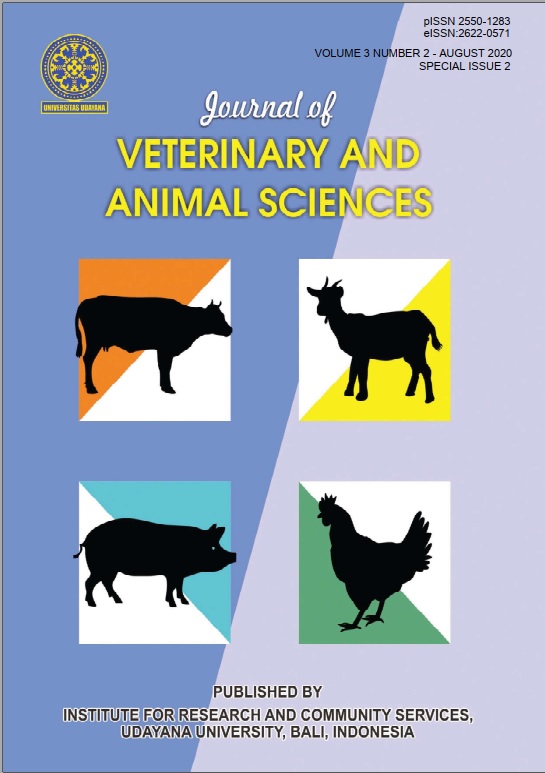Changes in blood calcium concentrations in Bali cattle during the periparturient period
Abstract
Calcium is a macromineral that plays an important role in the health, production, and reproduction of animals. Calcium requirements in cattle depend on breed, age and parity, path physiological status, body condition score, gestation status, and lactation. During the periparturient period, the cows struggle to maintain calcium homeostasis, and if it is failed, the animal will experience hypocalcemia. As is known hypocalcemia as a predisposing factor for a number of reproductive disorders and infectious diseases. This study aims to investigate changes in blood calcium levels in Bali cattle during the periparturient period. The object of research is nine months pregnant Bali cattle and in good health, kept in cage in a horticultural farming environment. Three ml blood samples were taken through the jugular vein three times, namely in the last three weeks of gestation, on day parturition, and three weeks after calving. Blood samples were processed using the wet digestion method, and calcium concentrations were measured using the flame atomic absorption spectrometric method. The results showed an average blood calcium concentrations of 9.57±1.26 mg/dl, 4.11±0.63 mg/dl, and 8.32±1.23 mg/dl, respectively. Statistical analysis showed blood calcium levels during delivery experienced a very significant decrease. We find new evidence regarding the physiological data of Bali cattle, that at the time of parturition they experienced subclinical hypocalcemia. We concluded that there was a fluctuating change in blood calcium concentrations, where the normal value in the last three weeks of gestation experienced a significant decrease at the parturition and increased after three weeks of calving but has not yet reached the initial condition.











